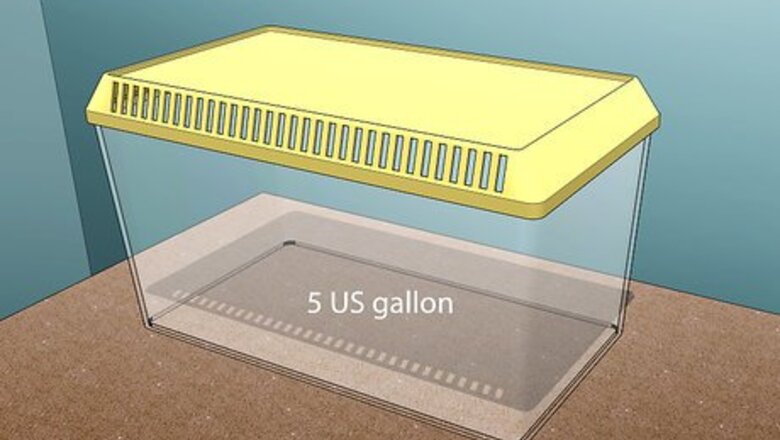
views
Creating a Millipede Habitat
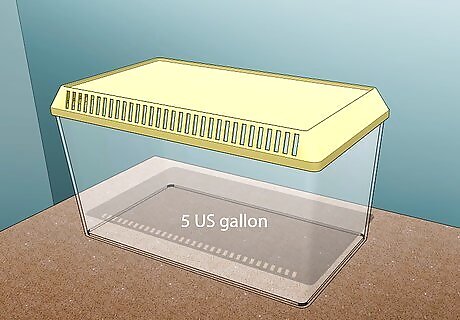
Use a 5 US gal (19 L) aquarium with no holes and a lid for its enclosure. Make sure your millipede can breathe! Cover the top of the tank to prevent your millipede from escaping, or ensure that the top is at least three times as tall as the length of your millipede or big enough for it to be happy. It can stretch and climb most surfaces very easily, so it is generally best to keep the top securely covered. If you want to keep more than one millipede, use a larger tank. You should aim to have the tank be three times as long as the length of your millipedes combined.
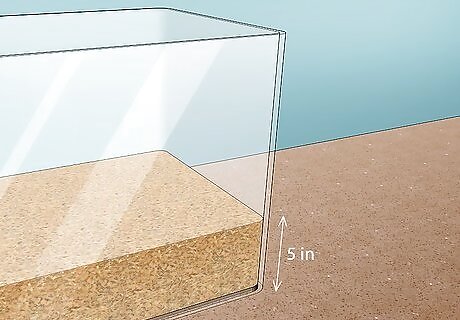
Add a layer of mulch to the bottom of the enclosure, such as moss or bark. Millipedes need moist mulch to be able to thrive. The best thing to use is a mix of fresh moss and bark lightly soaked in water, but there are specialty substrates available from most insect-oriented pet stores. Add a layer about 5 inches (13 cm) thick of mulch to the bottom of the enclosure before you add other features.

Provide a place for your millipede to hide so it feels safe in its home. All animals get scared of big creatures every now and again, and millipedes are no exception. Give it a place to hide from noises and bright lights, like an old broken vase or a plastic dome with a hole cut out. You can use dead or artificial wood and natural elements as both decorations in the enclosure as well as hiding places for your millipede. This will provide scenery for your millipede to climb on and hide in, and will also make the enclosure look prettier to an observer.
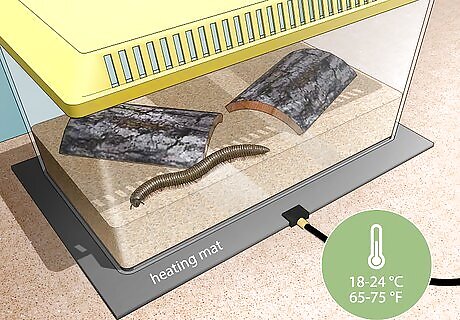
Keep the temperature at 65–75 °F (18–24 °C) with a heating lamp or mat. Millipedes are used to mild, moist, and dark environments. Replicate its natural habitat by keeping the temperature in the cage at a comfortable 65 °F (18 °C) to 75 °F (24 °C) with a heating lamp or a heat mat placed underneath one half of the layer of mulch. Be careful when using a heating lamp, as if you leave it on at a high heat level it will make the enclosure unsuitable for your millipede. Keep a careful watch on the temperature in the enclosure with a thermometer, and adjust the heating lamp to provide a consistent but gentle warmth.
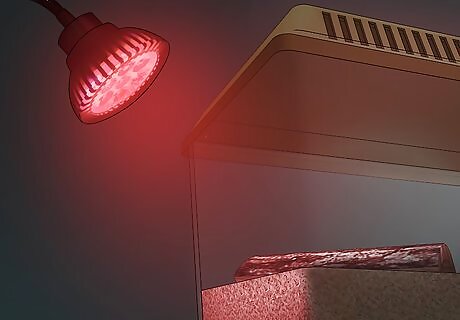
Use a red light in the enclosure to prevent light damage to your millipede. Don't use a bright light to light the enclosure, opt for a red light instead, as bright lights can scare your millipede into hiding. A red light emits a different wavelength of light that is suitable for creatures used to living in secluded dark places, such as insects, bugs, lizards, and other animals used to caves and darkness.
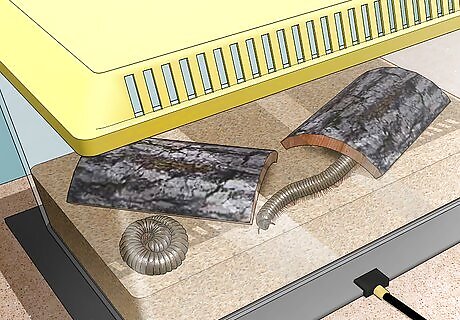
Keep millipedes of the same species together, but separate different millipedes. It's perfectly fine to keep millipedes of the same species in the same enclosure — in fact, they may breed and make a little millipede family! If you have millipedes from different species, though, you must keep them in separate enclosures as they will fight for dominance and battle over resources. If you only have one enclosure, you can separate it in half with a glass divider or metal sheet. Just be sure that each half of the enclosure provides enough room for your millipede to feel comfortable — it should be about 3 times the length of your millipede at a minimum.
Feeding your Millipede a Balanced Diet
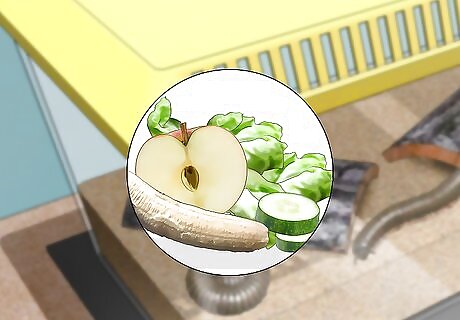
Provide plenty of veggies, fruit, leaves, and wood for your millipede to eat. Millipedes eat many different foods, but depending on the species, it will have certain preferences. Some millipedes only eat leaves and wood, while others will eat just about anything you provide. Millipedes will only eat what they need to eat, so feel free to spread lots of options spread around the cage each day — give them a few different options, and they'll only eat what they need to be nourished. After a few days of providing various foods, see what your millipede has been eating and what it has been avoiding. Give it less of the food it doesn't eat and more of its favorites to keep it healthy and well nourished.
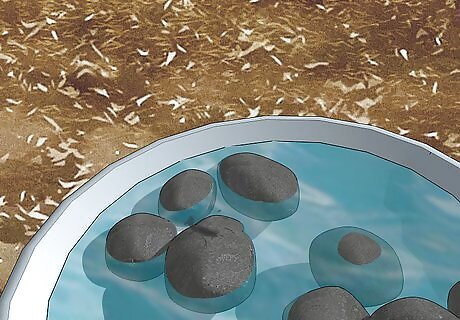
Provide purified or chlorine-free water in a shallow bowl filled with rocks. Fill the bowl with water, then add a layer of rocks to the bottom of the bowl. This will prevent your millipede from drowning in the water, as it will stand on the rocks and drink from the surface. It is vital that the water is chlorine free because your millipede's small size means that even a tiny amount of contaminant could cause severe health effects. Boil tap water if you are unsure if your local municipality adds chlorine to the water.
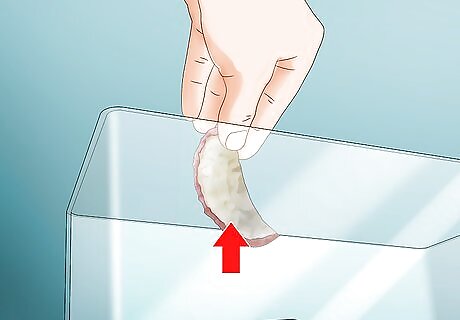
Throw away anything your millipede doesn't eat and replace the water daily. If you provide fruits and veggies for your millipede, keep a close watch on them and take the food out of the cage when it starts to rot. The water should be changed daily to ensure that your millipede has the best quality water with no contaminants. Changing the water daily can be helpful in preventing fungal growth in the enclosure as well, as any fungi that grow in the water will be removed regularly.
Maintaining Your Millipede's Health

Clean the enclosure with 3% bleach solution and replace the mulch weekly. Remove your millipede and keep him in a sealed nearby plastic container while you clean. Remove everything from the habitat and wipe down the sides and scenery with a rag soaked in 3% bleach solution. Wash the bleach away with a rag soaked in water, until there is no trace or scent of bleach at all. Throw away the mulch and replace it with a fresh, clean layer of substrate. Even at such a low concentration, bleach can be detrimental to your millipede's health. Be certain that you've wiped away any remnants of the bleach solution before you start putting things back into the habitat.

Make sure your millipede is eating normally and is moving around the cage. Millipedes are slow movers and don't do a lot most of the time during the day, as they are nocturnal animals. Check on your millipede a few times each day to see if it moves around normally throughout its enclosure. If it stays in the same place for too long, it may not be getting the nutrition it needs. Check what kind of food your species of millipede needs to thrive, and be sure to replace its water on a daily basis. Some millipedes prefer fruits and veggies, some prefer rotting wood and plant matter, but feeding the wrong type of food to the wrong millipede could make it abnormally lethargic.
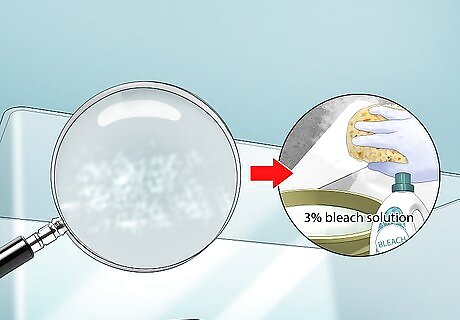
Check for fungal growth in the enclosure regularly. Each time you clean the enclosure check to see if there is any mold growth. If there is, clean it with a 3% bleach solution and consider changing your mulch type. Be sure to clean the water out regularly and keep a close eye on the sides of the enclosure for particularly egregious mold growth throughout the week. If you notice mold growth before the regular weekly cleaning, you will have to clean it then and there to prevent any health effects to your millipede. Use purified water to further prevent mold growth in both its water bowl as well as to soak the mulch — non-chlorinated water is usually fine, but purified water is optimal.
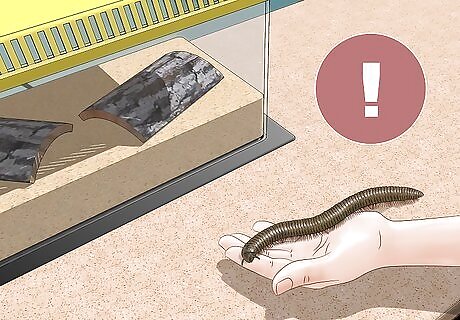
Avoid taking your millipede out of its habitat for extended periods of time. Millipedes are easily scared by unwanted interactions. Don't take it out for too long during the day, as they are naturally nocturnal, and keep it away from bright lights when you do want to interact with it. If you want to take your millipede out to handle, be very careful and pick it up from the bottom in the palm of your hand. Do not use a pinching motion to pick up your millipede. They are delicate creatures and if you squeeze too hard you risk rupturing its body segments.
















Comments
0 comment